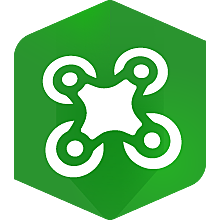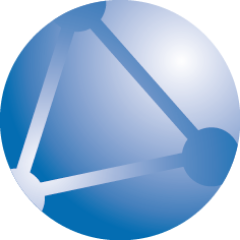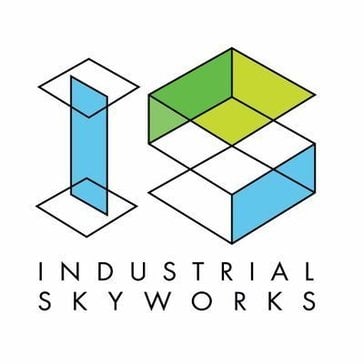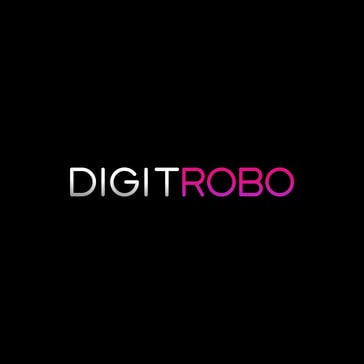Description

ArcGIS Drone2Map

DroneNaksha
Comprehensive Overview: ArcGIS Drone2Map vs DroneNaksha
Overview of ArcGIS Drone2Map and DroneNaksha
a) Primary Functions and Target Markets
ArcGIS Drone2Map:
- Primary Functions:
- ArcGIS Drone2Map is designed to process drone-captured imagery into various GIS-compatible formats.
- Key functionalities include orthomosaic generation, 3D mapping, digital surface models (DSM), and digital terrain models (DTM).
- It allows users to produce reliable mapping products such as elevation datasets, 3D meshes, and detailed inspection imagery.
- It integrates seamlessly with ArcGIS Online and ArcGIS Pro, enabling easy sharing and further spatial analysis.
- Target Markets:
- Surveying and mapping professionals.
- Agriculture for crop monitoring and management.
- Construction and infrastructure for site planning and monitoring.
- Environmental and natural resource management.
- Law enforcement and public safety for disaster response and recovery.
DroneNaksha:
-
Primary Functions:
- DroneNaksha is a drone mapping software developed to cater specifically to the Indian market.
- It offers functionalities similar to Drone2Map, including orthophoto creation, contour mapping, and 3D modeling.
- Provides robust surveying, analytics, and reporting tools specialized to meet local geographical and regulatory requirements.
-
Target Markets:
- Indian surveying companies and government agencies.
- Urban planning departments.
- Agricultural sector for land management.
- Mining and resource extraction industries.
- Environmental conservation efforts on a regional scale.
b) Market Share and User Base
- ArcGIS Drone2Map:
- As part of the broader Esri ecosystem, Drone2Map benefits from Esri's dominant market position in GIS technologies globally.
- Widely used in North America, Europe, and parts of Asia, often integrated with other Esri products.
- Its user base typically includes large enterprises, government agencies, and organizations with existing ArcGIS implementations.
- The market share is substantial, given Esri’s overall influence in the GIS market, though specific drone mapping market share numbers are typically not separately reported.
- DroneNaksha:
- Primarily serves the Indian market. It has a growing user base due to government initiatives in digital mapping and infrastructure development.
- Competes with international products by providing customized solutions that meet the country's specific cartographic standards and legislation.
- Market share in India is notable among local businesses and public sector projects, though less recognized globally.
c) Key Differentiating Factors
-
ArcGIS Drone2Map:
- Strong integration with the Esri ecosystem, providing a comprehensive suite of GIS tools beyond drone mapping.
- Advanced analytical capabilities and support for a wide range of spatial data types.
- Extensive global support network and documentation, alongside a large international user community.
- Regular updates and enhancements in line with Esri’s overall development strategy.
-
DroneNaksha:
- Localization: Offers features and support specifically tailored for Indian geographic and regulatory contexts.
- Competitive pricing for Indian markets, aligning with local economic conditions and business practices.
- Focused adoption in sectors like urban development, where local knowledge and expertise offer a competitive edge.
- Easier compliance with Indian government standards for mapping and surveying.
Conclusion
Both ArcGIS Drone2Map and DroneNaksha provide sophisticated tools for processing drone imagery but cater to different markets and user needs. Drone2Map benefits from its integration with the broader Esri ecosystem and a significant presence in international markets, while DroneNaksha focuses on the Indian market with localized solutions. The choice between them often depends on geographic location, existing software ecosystems, and specific project requirements.
Contact Info

Year founded :
Not Available
Not Available
Not Available
Not Available
Not Available

Year founded :
Not Available
Not Available
Not Available
Not Available
Not Available
Feature Similarity Breakdown: ArcGIS Drone2Map, DroneNaksha
As of my last update in October 2023, ArcGIS Drone2Map and DroneNaksha are both software solutions focused on processing drone imagery and generating geospatial data products. However, they cater to slightly different markets and have unique features. Here's a breakdown based on the information available:
a) Core Features in Common
-
Orthomosaic Generation: Both ArcGIS Drone2Map and DroneNaksha can create detailed orthomosaics from aerial images captured by drones. These are map-accurate and are used for comprehensive analysis.
-
3D Mapping: They offer 3D mapping capabilities, allowing users to create 3D models and point clouds from drone imagery. This is essential for terrain analysis, construction, and urban planning.
-
DSM and DTM Creation: Both tools can generate Digital Surface Models (DSM) and Digital Terrain Models (DTM), which are crucial for understanding the topography and surface characteristics.
-
Measurement Tools: Each provides measurement tools for calculating distances, areas, and volumes directly from the processed imagery.
-
Data Import/Export: They support various data formats which ensure compatibility with other GIS applications and make it easy to import/export data for further analysis.
b) User Interface Comparison
-
ArcGIS Drone2Map: As part of the ArcGIS ecosystem by Esri, Drone2Map has a user interface similar to other ArcGIS products. It is designed for integration with the broader ArcGIS platform, which can be beneficial for existing ArcGIS users. The UI is polished and professional, with robust GIS capabilities tailored to experienced users who need deep integrations with other Esri products.
-
DroneNaksha: DroneNaksha typically offers a more streamlined user interface, which might be easier for beginners or those not deeply familiar with GIS concepts. It is generally simpler and more intuitive, accommodating users who focus on rapid deployment of drone data without requiring extensive GIS experience. The UI prioritizes ease of use and fast processing times.
c) Unique Features
-
ArcGIS Drone2Map:
- Integration with ArcGIS Online: A significant advantage of Drone2Map is its seamless integration with ArcGIS Online, allowing for easy sharing and publishing of drone imagery within the broader ArcGIS ecosystem.
- Advanced Analysis Tools: Given its lineage, it incorporates more advanced spatial analysis tools, which make it suitable for professionals who need comprehensive geospatial analytics beyond standard drone data processing.
-
DroneNaksha:
- Localized and Regional Support: DroneNaksha often emphasizes regional and industry-specific customization, catering to localized needs that can be crucial for specific markets, particularly within India and neighboring regions.
- Cost-Effective and Simple Pricing Models: It may also offer more cost-effective and simpler licensing or pricing models, making it attractive for small to medium-sized enterprises or those just beginning to use drone imagery.
In conclusion, while both ArcGIS Drone2Map and DroneNaksha share core functionalities for processing and analyzing drone data, they cater to different user bases and requirements. ArcGIS Drone2Map benefits from its integration within the powerful ArcGIS suite, making it ideal for existing ArcGIS users requiring advanced analysis. In contrast, DroneNaksha focuses on user-friendliness and regional adaptability, appealing to users needing straightforward, efficient drone processing solutions.
Features

Intuitive Drone Mapping
Seamless Integration
Advanced Processing
Field-to-Office Connectivity

Automated Flight Planning
Advanced Data Analytics
User-Friendly Interface
Real-Time Data Collection
Best Fit Use Cases: ArcGIS Drone2Map, DroneNaksha
ArcGIS Drone2Map and DroneNaksha are both tools used for processing drone imagery, but they cater to different needs and preferences based on their functionalities, integrations, and user base. Here’s how they best fit various use cases:
ArcGIS Drone2Map
a) Best Fit Use Cases:
- Types of Businesses or Projects:
- Geospatial and Mapping Services: Ideal for companies specializing in geospatial analysis that require seamless integration with the ESRI suite of products.
- Environmental Monitoring: Useful for environmental organizations needing detailed mapping and analysis for habitat assessment and monitoring changes over time.
- Urban Planning: Planning agencies that need current aerial imagery to design and manage urban infrastructure projects can benefit from the integration with other GIS tools.
- Agriculture: Agricultural businesses implementing precision farming practices can use Drone2Map for crop monitoring and analysis of field conditions.
- Disaster Response and Management: Organizations involved in disaster response can use the tool for rapid mapping and damage assessment, leveraging ArcGIS's real-time capabilities.
Industry Verticals and Company Sizes:
- Large Enterprises and Government Agencies: With its comprehensive features and integration with the broader ArcGIS platform, it is well-suited for larger organizations with complex geospatial data needs.
- Consultancies and NGOs in Environmental and Urban Management: These entities benefit from the advanced analytics capabilities and integration with existing GIS infrastructure.
DroneNaksha
b) Preferred Scenarios:
- Types of Projects or Sectors:
- Non-Governmental Organizations (NGOs) and Community Projects: DroneNaksha's ease of use and cost-effectiveness are ideal for smaller organizations or community projects that require basic drone data processing without extensive GIS capabilities.
- Small-Scale Agriculture: Farmers or cooperatives needing straightforward mapping solutions for crop management can find DroneNaksha easy to adopt.
- Real Estate and Construction: Companies requiring imagery for layout planning or marketing properties might prefer the simplicity and focused feature set of DroneNaksha.
Industry Verticals and Company Sizes:
- Small to Medium-Sized Enterprises (SMEs): Its lower barrier to entry and simpler functionality make DroneNaksha suitable for SMEs that do not need the full suite of advanced GIS tools.
- Local Educational Institutions and Training Centers: Those aiming to use drones for educational purposes or basic research can leverage DroneNaksha’s user-friendly interface.
Comparative Considerations for Different Needs:
- Technical Integration and Expertise: ArcGIS Drone2Map is ideal for users needing deep integration with GIS capabilities and those who have GIS expertise in-house. DroneNaksha may serve users who prioritize ease of use and do not require complex GIS functionalities.
- Cost Considerations: For businesses with limited budgets or those seeking a straightforward mapping tool for specific projects, DroneNaksha is often more accessible economically.
Both tools have their strengths depending on the operational context, project requirements, and resources available within the business. Choosing the right tool involves evaluating the complexity of the project, required integration with other systems, and budget constraints.
Pricing

Pricing Not Available

Pricing Not Available
Metrics History
Metrics History
Comparing undefined across companies
Conclusion & Final Verdict: ArcGIS Drone2Map vs DroneNaksha
When evaluating ArcGIS Drone2Map and DroneNaksha, it's important to consider various factors such as pricing, functionality, ease of use, integration capabilities, and support services. Here's a comprehensive analysis to help users make an informed decision:
a) Best Overall Value
ArcGIS Drone2Map offers the best overall value if integration with the ArcGIS ecosystem is crucial to your workflows. It seamlessly connects with other ArcGIS products, providing robust mapping and analytical capabilities for users heavily invested in Esri's suite of tools.
DroneNaksha, on the other hand, might provide better value for users looking for a more cost-effective solution with basic mapping needs, particularly for those based in regions where DroneNaksha's localization and specific features are more applicable.
b) Pros and Cons
ArcGIS Drone2Map
Pros:
- Integration with ArcGIS: Offers excellent integration with the ArcGIS platform, making it ideal for users already utilizing other Esri products.
- Advanced Features: Provides a wide range of advanced mapping and analytical tools.
- Data Management: Superior data management and sharing capabilities through ArcGIS Online.
Cons:
- Cost: Typically has a higher pricing point, especially for small businesses or individual users.
- Complexity: Can be more complex to learn for beginners not familiar with GIS software.
DroneNaksha
Pros:
- Cost-Effective: Generally more affordable, making it accessible for smaller operations or independent professionals.
- User-Friendly Interface: Often more straightforward for beginners or those not needing advanced GIS capabilities.
- Localized Features: May offer more targeted features for specific regional needs.
Cons:
- Limited Integration: Less integration with larger GIS systems beyond its platform.
- Basic Features: Fewer advanced analytical tools compared to ArcGIS Drone2Map.
c) Recommendations for Users
-
For Users Within the Esri Ecosystem: If you are already utilizing Esri software, ArcGIS Drone2Map should be your go-to because of its seamless integration, allowing for a more comprehensive GIS solution.
-
For Cost-Conscious Users or Beginners: DroneNaksha is recommended, especially if you require basic drone mapping functionalities without the additional overhead costs typical of Esri products.
-
Assess Your Needs: Consider the complexity and scale of your projects. For sophisticated data analysis in a GIS environment, ArcGIS Drone2Map is preferable. If your needs are simple and localized, DroneNaksha may suffice.
-
Trial Periods and Demos: Take advantage of any available trial periods or demos to test both software and see which feels more intuitive and meets your requirements.
Ultimately, the best choice depends on your specific needs, budget constraints, and the extent to which you require integration with existing GIS infrastructures.
Add to compare
Add similar companies



